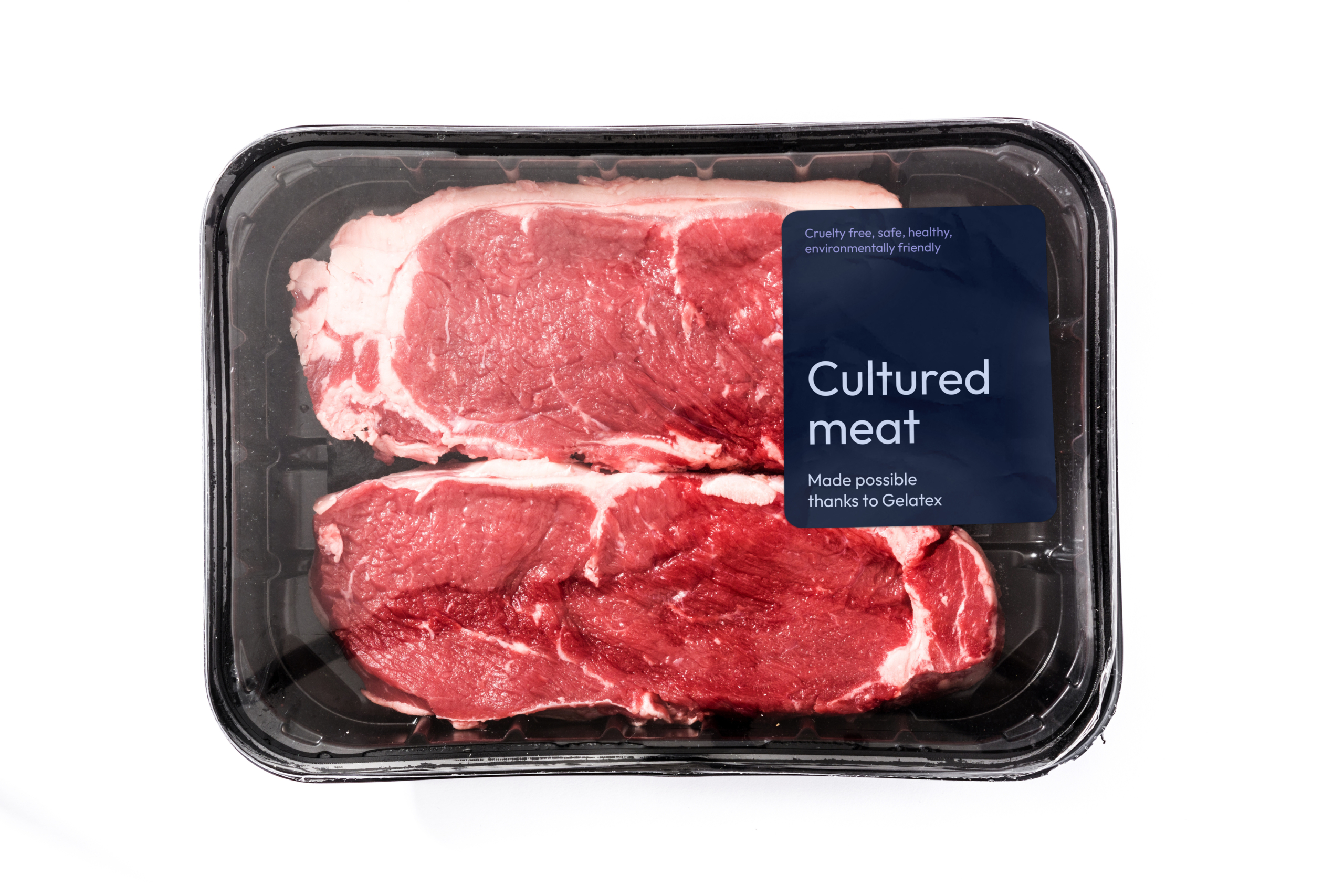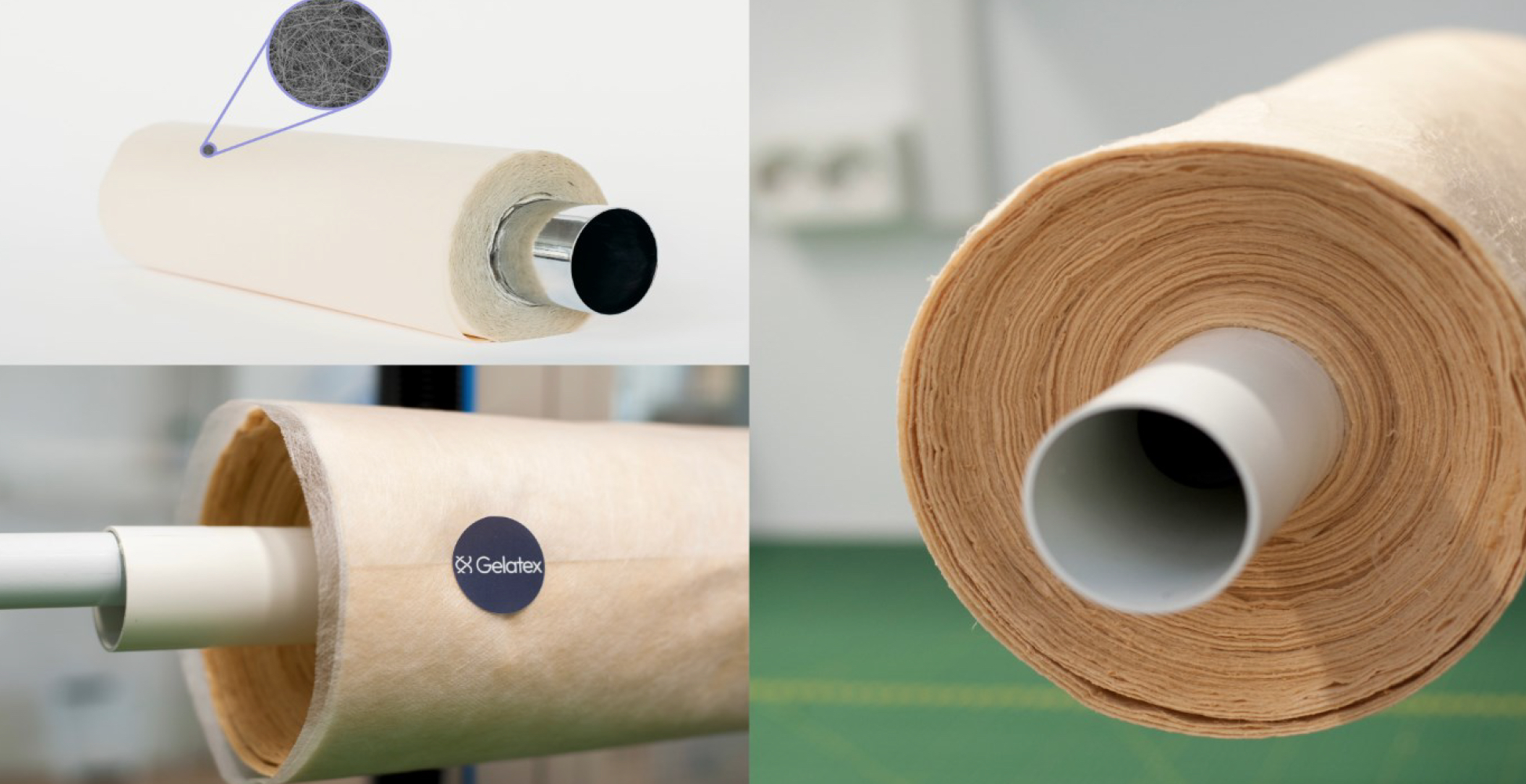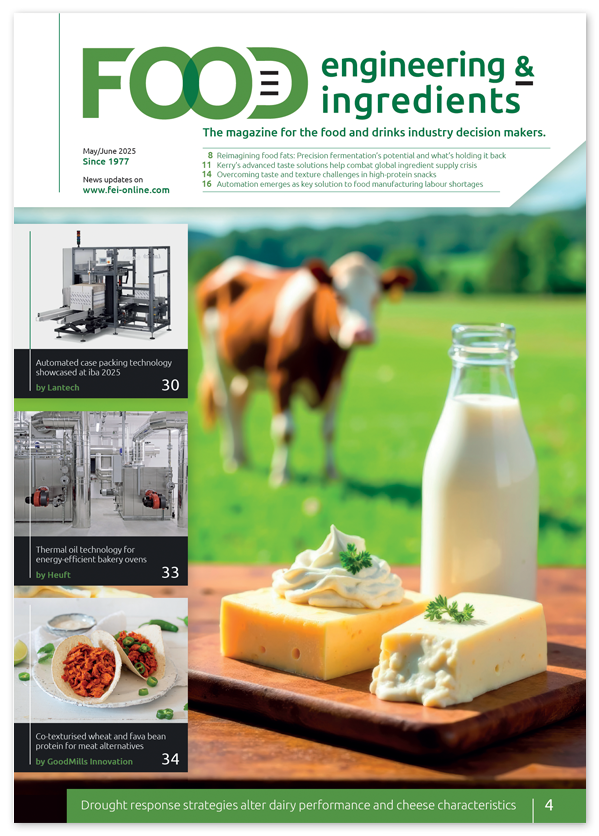Scaling new heights: Industrializing cultivated meat production with advanced scaffolding solutions
In a series of articles for Food Engineering & Ingredients, Athanasios Garoufas will look at alternative proteins and the various technologies that enable the development and production of meat alternatives. Alt proteins include plant-based protein products, cellular agriculture (cultivated meat), mycoproteins, insect proteins and precision fermentation. In this article, the author looks at the difficulty of scaling up production of cultivated meat to industrial levels and discusses the use of scaffolds as a solution to this challenge.
The problem with the industry
Cultivated meat, also known as cellular agriculture or lab-grown meat (though the name is still under debate), has entered a critical phase in its development. As we move towards the industrialisation of cultivated meat – making cultivated meat available on a mass scale – there are some significant challenges. Despite significant investment and bold claims, many of these have remained just that – claims. We have heard promises of whole cuts of meat from cellular agriculture without the use of enabling technologies, and tales of proprietary, almost magical solutions that later proved to be non-existent.
This industry is an enormous endeavour, so much so that it can be likened to a conundrum – a complex, multifaceted challenge. The mere claim that a single company can solve the myriad of issues in a vertically integrated manner is overly simplistic. Think about it: the industry is currently not generating revenue for anyone and is solely venture capital (VC)-backed. As a VC-backed industry, a clear commercialization horizon should be visible by now, but instead, we’ve seen a cycle of overpitching, overpromising, and underdelivering for years. I believe this lack of progress stems from an absence of synergies.
Companies venturing into this uncertain territory often rely more on their IP and secretive processes to secure funding rather than focusing on the actual market, which is fraught with uncertainties. Short-term environmental control was limited to internal IP creation, creating a ‘comfort zone’. However, a lack of significant IP could mean a lack of funding at this stage. True progress requires openness and flexibility, with a bold decision to move forward faster and more efficiently by synergistic or collaborative outsourcing where and when it makes sense.
High-performing edible scaffolds
Thus, if we envision the market entry of cultivated meat products, the path should involve a gradual process where efforts to scale up and offer price-competitive products inherently requires the use of enabling technologies. These technologies – such as cell culture scaffolds, foetal bovine serum replacement media and cell differentiation supplements – are vital for providing the necessary structure, texture, flavour, and cost-effectiveness while scaling up production of these cell-based products.
One such technology that can help the industry become a reality involves to the use of scaffolds for cultivated meat. The architecture of the scaffold is of paramount importance in this process. An ideal scaffold should offer a suitable 3D environment for cells to adhere, proliferate, and differentiate. Moreover, the porosity of the scaffold must be such that it allows for efficient nutrient and oxygen diffusion throughout. The focus should be placed on high-performing edible scaffolds, such as those used by Gelatex, which are suitable for a wide variety of cell types across different animal species. Suspension culture by itself (without the use of a scaffold), although possible, doesn’t provide for a end-product that can be scaled as is. Although this relates to the end-product in question it has been found to be true for most suspension-only cell cultures. A post process is generally needed to transform the mush of cells coming from stirred tank bioreactors into a shaped, structured product desired by consumers. But it doesn’t have to be like this. Aside from the obvious benefits of using scaffolds with adherent cells there are several ways through which scaffolds can contribute to scaling up production and providing structured products ready for the consumer.
Busting some myths about scaffolds in cellular agriculture
To get there though, we need to first bust some myths surrounding scaffold systems in cellular agriculture.
Myth No 1:
Scaffolds are an unnecessary step in the production process – and if we skip it, price parity will be easier to achieve.
Contrary to the notion that scaffolds are just another complicating, costly step in the cell-culture process, they are, in fact, a minuscule part of the end-product’s cost. Innovations like Gelatex’s HaloSpinning technique, which is up to 90% more efficient in terms of machinery throughput compared with conventional methods for nanofiber scaffold production, show that scaffolding is not a significant determinant in the final product’s price. Even without a fully developed market or large-scale production, Gelatex offers competitively priced, high-performing scaffolds.
Gelatex’s microcarriers
Myth No 2:
Scaffolds will turn a cell-cultured meat product into a hybrid meat/plant-based one, in other words, something of lower quality.
This is far from the truth. At Gelatex, we’ve developed platforms with varying degradation profiles, allowing scaffolds to degrade during maturation, aligning with natural extracellular matrix (ECM) production by cells. We have several ways of controlling this, ranging from the material choice to the thickness of it and the crosslinking techniques used, which all affect the degradation profile. At Gelatex we have created several platforms with varying degradation profiles. Thus the use of scaffolds can facilitate the production of a 100% cultivated meat product, if necessary, provided that scaffold degradation happens concurrently with natural ECM production by the cells during the maturation phase.
However, we also need to address the basic claim here – the desire to have a 100% cultivated meat product, as anything else may be less than ideal. One has to ask if a small percentage (let’s say 5%) of the end product was to remain as a scaffold, why would this be a problem? The short answer is that it shouldn’t be a problem. Even if a small percentage of the final product was scaffold material, it isn’t a significant issue. The organoleptic properties – that is the sensory characteristics of the product (taste, texture, etc.) – at these levels would only be minimally affected and could even be positively influenced. Considering the additives used in conventional products, the scaffold itself could potentially also serve as an effective delivery mechanism for these additives. Aside from plant-based scaffolds, gelatin can also be used as a sustainable solution (as a product of the circular economy). In this scenario, for example, even if we have scaffolding material remaining in the end product, this cannot really be considered a plantbased hybrid meat, given that the scaffolding material is itself a natural ECM. To further elaborate on this, scaffolds can make up a small percentage of the final product while still enhancing the benefits of adherent cell culture, crucial for the development of authentic cultivated meat. As such, it is clear that scaffolding technology is not just a useful tool, but a necessary component, in the production of cultivated meat.
Of course, another completely viable approach is that of actual hybrid plant/meat products, for example, cultivated meat products with more than 20% scaffold content. These are coming to the market first in an effort to address commercialization issues, such as the need for VCs to make returns on their investments while enabling further research in the field. Hybrid products may also be more acceptable to the general public initially, while consumers become accustomed to cultivated meat products. In this context, the benefits of scaffolding are obvious. As well as having scaffolding as an actual part of the end product, it also enables producers to structure the product in different ways to make them more attractive to consumers, by providing different texture profiles, incorporating natural colours and flavourings, fortifying it with minerals to enhance the nutritional profile, and many more possibilities. We can do all these things with very stable and cost-effective nanofiber scaffolds that are simultaneously very sophisticated platforms for cell culture. This is just the beginning. Imagine when the industry kicks off, what scale can provide.
Myth No 3:
Suspension culture alone can be expanded to industrial scale for structured products without the need for scaffolds.
Well, researchers haven’t managed to do this yet after years of funding and research. There are inherent reasons for this. Imagine the post process – where you need to turn the mush of cells coming from the proliferation phase into structured products. How can this be better than automated seeding on scaffolds?
Scaffolds that are sterilized with UV lamps and prepared in ethanol baths for seeding and cell attachment, and which then enter the maturation phase bioreactors, will provide us a with a continuous supply of structured meat without the need for any kind of post process which is required for cell suspension production. At Gelatex, we have effectively differentiated cells on scaffolds and microcarriers for years and the resulting products show that this is a process that can indeed be scaled up in a controlled and predictable way. For this reason, we are working with other companies in the field to facilitate differentiation. These companies take advantage of Gelatex’s scaffolds for their novel maturation phase bioreactor systems or Gelatex’s microcarriers with their proliferation tanks.
The importance of enabling technologies
Ultimately, it appears that several companies that have tried to vertically integrate the entire process have done so not because they had neither the ability nor the proprietary technology in place to do so, but because the investment-related environment was such that they were hesitant to look for synergies which involved outsourcing parts of the process. As such, they stayed in their comfort zone, a zone that in most cases can solve some, but not all that is necessary to develop cellular agriculture into a full-fledged industry.
So, synergies with enabling technologies are more than desirable, they are necessary for the industry’s future. We should take advantage of every technology available in an effort to facilitate the complete realization of this industry – from Gelatex’s scaffolding solutions www.gelatex.com , to ARK’s novel bioreactors www.ark-biotech.com, to Multus’ Foetal Bovine Serum-free media, to 3D-Biotissues City-Mix www.3dbiotissues.com/citymix that enhances proliferation rates, to Profuse’s differentiation supplements https://profuse-tech.com and even to Proxy Foods https://proxyfoods.ai with their specialization in AI-centred prediction of organoleptic properties through focusing on recipe formulation optimization, understanding flavour networks, and decoding synergistic and antagonistic effects on taste. There needs to be greater collaboration between these tech providers and the cultivated meat companies to enable the industry to become fully established.
Gelatex’s edible nanofiber scaffold rolls.
Myth No 2:
Scaffolds will turn a cell-cultured meat product into a hybrid meat/plant-based one, in other words, something of lower quality.
This is far from the truth. At Gelatex, we’ve developed platforms with varying degradation profiles, allowing scaffolds to degrade during maturation, aligning with natural extracellular matrix (ECM) production by cells. We have several ways of controlling this, ranging from the material choice to the thickness of it and the crosslinking techniques used, which all affect the degradation profile. At Gelatex we have created several platforms with varying degradation profiles. Thus the use of scaffolds can facilitate the production of a 100% cultivated meat product, if necessary, provided that scaffold degradation happens concurrently with natural ECM production by the cells during the maturation phase.
However, we also need to address the basic claim here – the desire to have a 100% cultivated meat product, as anything else may be less than ideal. One has to ask if a small percentage (let’s say 5%) of the end product was to remain as a scaffold, why would this be a problem? The short answer is that it shouldn’t be a problem. Even if a small percentage of the final product was scaffold material, it isn’t a significant issue. The organoleptic properties – that is the sensory characteristics of the product (taste, texture, etc.) – at these levels would only be minimally affected and could even be positively influenced. Considering the additives used in conventional products, the scaffold itself could potentially also serve as an effective delivery mechanism for these additives. Aside from plant-based scaffolds, gelatin can also be used as a sustainable solution (as a product of the circular economy). In this scenario, for example, even if we have scaffolding material remaining in the end product, this cannot really be considered a plantbased hybrid meat, given that the scaffolding material is itself a natural ECM. To further elaborate on this, scaffolds can make up a small percentage of the final product while still enhancing the benefits of adherent cell culture, crucial for the development of authentic cultivated meat. As such, it is clear that scaffolding technology is not just a useful tool, but a necessary component, in the production of cultivated meat.
Of course, another completely viable approach is that of actual hybrid plant/meat products, for example, cultivated meat products with more than 20% scaffold content. These are coming to the market first in an effort to address commercialization issues, such as the need for VCs to make returns on their investments while enabling further research in the field. Hybrid products may also be more acceptable to the general public initially, while consumers become accustomed to cultivated meat products. In this context, the benefits of scaffolding are obvious. As well as having scaffolding as an actual part of the end product, it also enables producers to structure the product in different ways to make them more attractive to consumers, by providing different texture profiles, incorporating natural colours and flavourings, fortifying it with minerals to enhance the nutritional profile, and many more possibilities. We can do all these things with very stable and cost-effective nanofiber scaffolds that are simultaneously very sophisticated platforms for cell culture. This is just the beginning. Imagine when the industry kicks off, what scale can provide.
Myth No 3:
Suspension culture alone can be expanded to industrial scale for structured products without the need for scaffolds.
Well, researchers haven’t managed to do this yet after years of funding and research. There are inherent reasons for this. Imagine the post process – where you need to turn the mush of cells coming from the proliferation phase into structured products. How can this be better than automated seeding on scaffolds?
Scaffolds that are sterilized with UV lamps and prepared in ethanol baths for seeding and cell attachment, and which then enter the maturation phase bioreactors, will provide us a with a continuous supply of structured meat without the need for any kind of post process which is required for cell suspension production. At Gelatex, we have effectively differentiated cells on scaffolds and microcarriers for years and the resulting products show that this is a process that can indeed be scaled up in a controlled and predictable way. For this reason, we are working with other companies in the field to facilitate differentiation. These companies take advantage of Gelatex’s scaffolds for their novel maturation phase bioreactor systems or Gelatex’s microcarriers with their proliferation tanks.
The importance of enabling technologies
Ultimately, it appears that several companies that have tried to vertically integrate the entire process have done so not because they had neither the ability nor the proprietary technology in place to do so, but because the investment-related environment was such that they were hesitant to look for synergies which involved outsourcing parts of the process. As such, they stayed in their comfort zone, a zone that in most cases can solve some, but not all that is necessary to develop cellular agriculture into a full-fledged industry.
So, synergies with enabling technologies are more than desirable, they are necessary for the industry’s future. We should take advantage of every technology available in an effort to facilitate the complete realization of this industry – from Gelatex’s scaffolding solutions www.gelatex.com , to ARK’s novel bioreactors www.ark-biotech.com, to Multus’ Foetal Bovine Serum-free media, to 3D-Biotissues City-Mix www.3dbiotissues.com/citymix that enhances proliferation rates, to Profuse’s differentiation supplements https://profuse-tech.com and even to Proxy Foods https://proxyfoods.ai with their specialization in AI-centred prediction of organoleptic properties through focusing on recipe formulation optimization, understanding flavour networks, and decoding synergistic and antagonistic effects on taste. There needs to be greater collaboration between these tech providers and the cultivated meat companies to enable the industry to become fully established.
The author
Athanasios Garoufas serves as the Chief Business Development Officer at Gelatex Technologies. He passionately delves into disruptive ideas, nurturing them into full-fledged businesses that challenge the status quo and drive innovation.
Gelatex Technologies
Estonia-based Gelatex Technologies is at the forefront of sustainable innovation in materials technology, pioneering the production of eco-friendly nanofibers with its patented HaloSpinning technology. Our mission is to foster a healthier and more sustainable world by integrating nanofibers into a variety of sectors, including clean food production, medical applications, and sustainable materials. By creating high-performance scaffolds and microcarriers for cultured meat production, Gelatex leading the way in reducing environmental impacts associated with traditional meat production, such as land use, water consumption, and greenhouse gas emissions. Gelatex is dedicated to shaping a future where science and sustainability converge to create impactful solutions for our planet. www.gelatex.com






